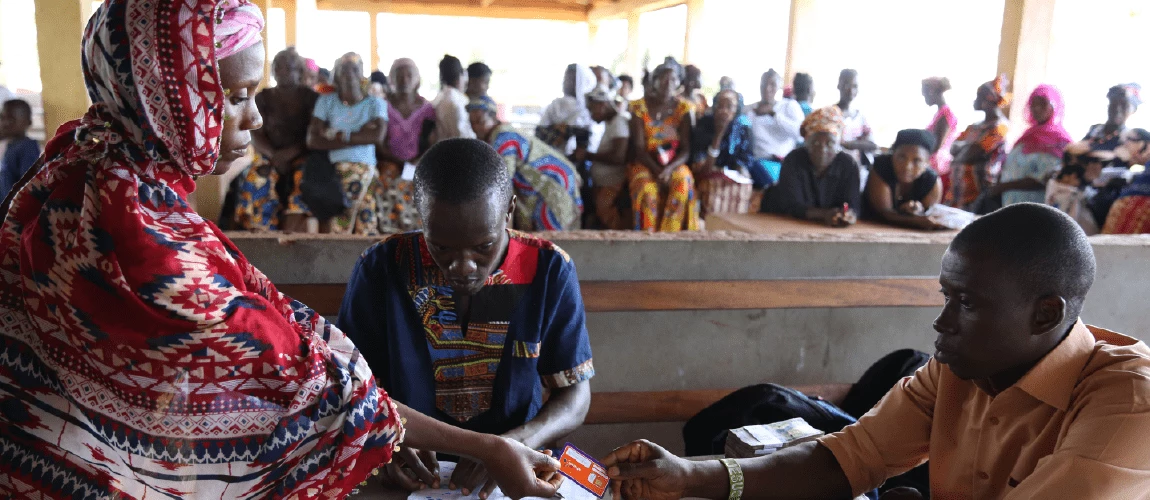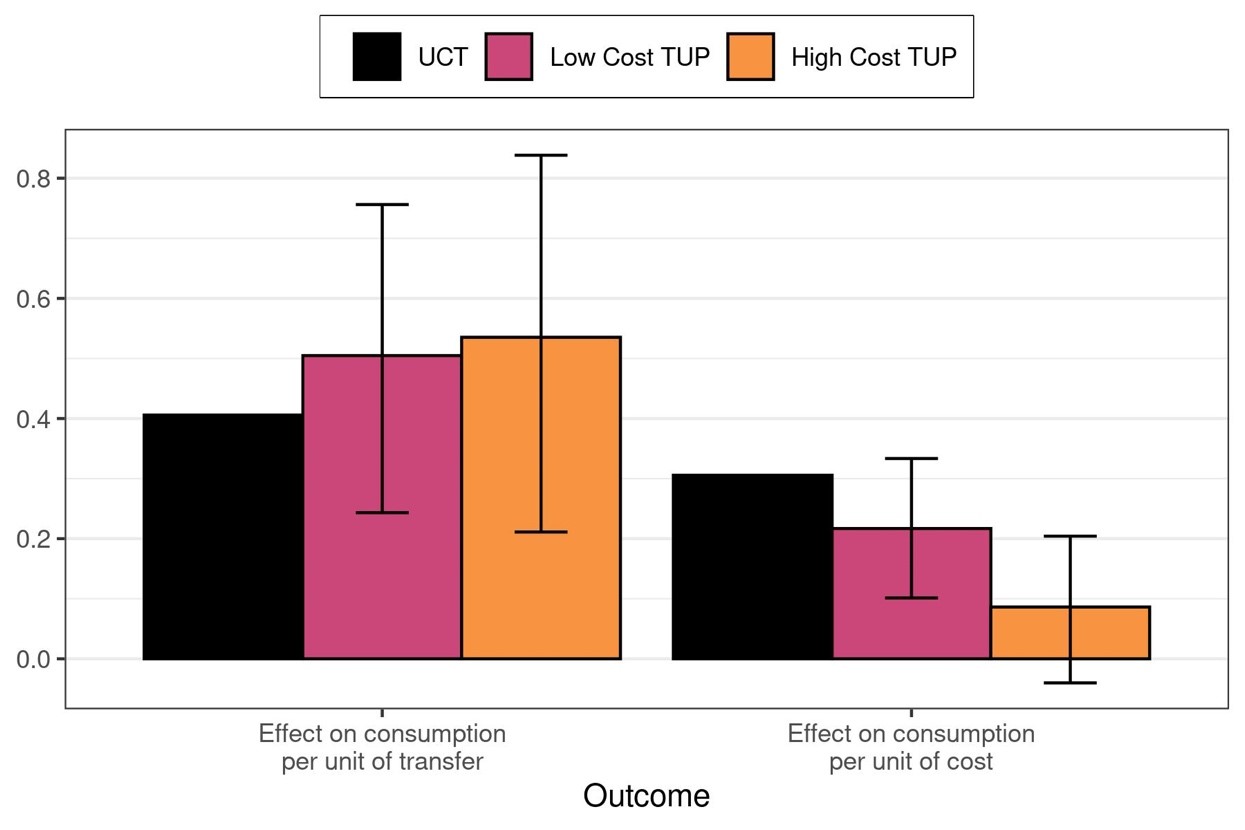 Dominic Chavez/World Bank
Dominic Chavez/World Bank
What are the common perceptions of “big push” cash interventions?
“Big push” interventions are commonly proposed to generate significant, sustained increases in household, community, and national income (Banerjee et al. 2020; Kraay and McKenzie 2014). At the household level, two approaches to increasing intervention size may––in theory––enable households to escape poverty traps and produce persistent decreases in poverty (Ghatak 2015):
-
When households are in a “scarcity poverty trap,” increasing the intensity (cash transfer size) of interventions can push households over a poverty threshold.
-
Alternatively, when households face “frictional poverty traps” (facing many obstacles), increasing the scope (adding complementary interventions to create multi-faceted programs) of interventions can enable households to overcome multiple constraints.
Evaluating increasing intervention intensity and scope requires measuring the cost-effectiveness of the impact of these approaches (Banerjee et al. 2015). However, evidence regarding the longer-term persistence of cost-effectiveness is limited for both approaches.
Addressing the Evidence gap
In our recent policy research working paper, we compiled 38 estimates of the impacts of temporary cash transfers on household consumption from 14 countries. These estimates were from 17 randomized control trials (RCTs) of either (i) temporary unconditional cash transfers (UCTs), or (ii) multi-faceted graduation programs with complementary interventions that included temporary unconditional transfers, often called “targeting the ultra-poor” (TUP). On average, the transfers were administered over eight months for unconditional cash transfers, and over 16 months for multi-faceted graduation programs.
We included these classes of programs to evaluate two approaches to increasing the size of cash transfers––increasing their intensity (small cash transfers or large cash transfers) and increasing their scope (cash transfers or multi-faceted graduation programs).
The RCTs in our sample all collected information on annual household consumption, cash transfer size, and program cost (in USD purchasing power parity). To measure cost-effectiveness, we focused on the effects of cash transfers on consumption.
Impacts of Temporary Unconditional Cash Transfers
-
Unconditional cash transfers increased annual household consumption by 0.35 per unit of transfer. Over three years, this implies that increases in household consumption are larger than the initial value of transfers. Consistent with intervention uniformity, these estimates are remarkably consistent across contexts.
-
Larger unconditional cash transfers had smaller impacts on consumption per unit of transfer over both the shorter and longer-term.
-
The impacts of unconditional cash transfers were more persistent in developing countries than wealthier countries.
-
Lastly, the cumulative impacts of unconditional cash transfers on consumption over the first three years were larger than the size of transfers––providing strong evidence that unconditional cash transfers are cost-effective.
Impacts of Complementary Interventions
-
Complementary interventions increased impacts on consumption.
-
In our sample, complementary interventions were relatively expensive to implement. Therefore, the average complementary intervention was 5–43 percent less cost-effective at increasing consumption than the average unconditional cash transfer at the average evaluated time horizon (1.5 years for UCT and 2.6 years for TUP).
-
Figure 1 shows that the reversal in sign of the relative effect of TUP on consumption per unit of transfer and per unit of cost are driven by the much higher implementation costs of TUP, and that differences in implementation costs across TUP programs are as important as differences in transfer costs between UCT and TUP.
-
However, we also find evidence that the average impacts of TUP program complementary interventions masks important variation across contexts. Specifically, we find evidence of variation in the cost-effectiveness of complementary interventions on increasing household consumption.
-
Lastly, the relative cost-effectiveness of complementary interventions grew over time––the impacts surpassed those of unconditional cash transfers after 3.4–7.7 years.
-
However, only four of the 20 complementary intervention estimates in our sample were more than three years since the last transfer, highlighting the need for more long-run estimates.
Figure 1: Estimates of Impacts of UCT and TUP Interventions on Consumption Per Unit of Transfer or Per Unit of Cost
 Recommendations
Recommendations
Our findings highlight that context-specific estimates are important for the long-run impacts of complementary interventions to inform policy. It is worth noting that beyond cost-effectiveness, there are justifications for increasing intervention size to consider. For example, increasing transfer size or providing multi-faceted programs to the poorest households can be powerful tools for poverty reduction (despite the variance in cost-effectiveness).
However, our results also question the necessity of “big push” interventions to reduce poverty, specifically:
-
Small (total transfer value under $1000 USD PPP/household) temporary cash transfers provide a strong benchmark for scalable, cost-effective poverty reduction across diverse contexts.
-
The presence of poverty traps alone does not justify increasing intervention size.
-
Instead, the distribution of poverty thresholds conditional on targeting is crucial.
Acknowledgments
This meta-analysis was completed during the preparation stages of the World Food Programme’s Cash-Based Transfers and Gender Impact Evaluation Window and the Climate and Resilience Impact Evaluation Window. It is based on data compiled to complete the Cash-Based Transfers and Gender Impact Evaluation Window pre-analysis plan.
Read the working paper, including the full results and a detailed discussion of the findings.
* This blog is co-published here with the World Food Programme’s Office of Evaluation.




Join the Conversation